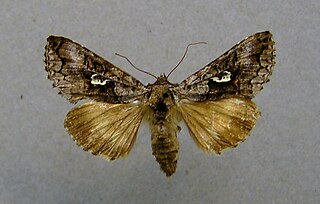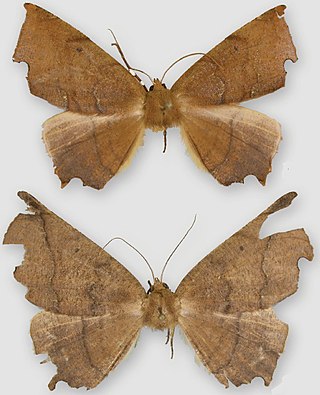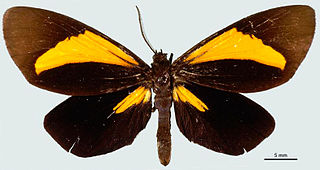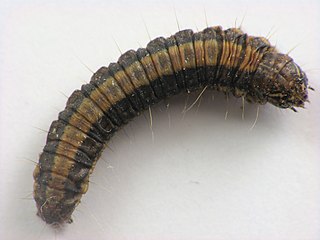
The United States hosted the 1904 Summer Olympics in St. Louis, Missouri.

Crocomela is a genus of moths in the subfamily Arctiinae. The genus was described by William Forsell Kirby in 1892.
Pareuplexia is a genus of moths of the family Noctuidae.
Anemplocia is a genus of moths in the family Geometridae erected by Warren in 1905.

Cyclophora is a genus of moths in the family Geometridae. Many species are referred to as mochas in reference to their colouration, primarily in Europe.

Syngrapha interrogationis, the scarce silver Y, is a moth of the family Noctuidae. It is found in northern part of the world including Alaska, Canada, Iceland, Europe, Siberia, the Pacific Northwest region of the United States, and Northeast Asia.

Opisthoxia is a genus of moths in the family Geometridae.

Phyllodonta is a genus of moths in the family Geometridae described by Warren in 1894.

Scopula is a genus of moths in the family Geometridae described by Franz von Paula Schrank in 1802.

Lyces vulturata is a moth of the family Notodontidae. It is found on high-altitudes in Peru

Mesalia is a genus of sea snails, marine gastropod mollusks in the family Turritellidae.

Asthenini is a tribe of geometer moths under subfamily Larentiinae first described by Warren in 1893. The tribe has been combined with Eupitheciini in the past, most notably by Jeremy Daniel Holloway in his work The Moths of Borneo.

The Epipaschiinae are a subfamily of snout moths. More than 720 species are known today, which are found mainly in the tropics and subtropics. Some occur in temperate regions, but the subfamily is apparently completely absent from Europe, at least as native species. A few Epipaschiinae are crop pests that may occasionally become economically significant.
Rhodostrophiini is a tribe of the geometer moth family (Geometridae), with about 200 species in 17 genera and five genera tentatively associated with the tribe.

The Pericopina is a subtribe of tiger moths in the family Erebidae. The subtribe was described by Francis Walker in 1869.
Crocomela colorata is a moth of the subfamily Arctiinae. It was described by Francis Walker in 1865. It is found in Colombia and Peru.
Crocomela fusifera is a moth of the subfamily Arctiinae. It was described by Francis Walker in 1856. It is found in Colombia.
Crocomela regia is a moth of the subfamily Arctiinae. It was described by Warren in 1901. It is found in Ecuador.
Crocomela rubriplaga is a moth of the subfamily Arctiinae. It was described by Warren in 1904. It is found in Ecuador.
Crocomela tripunctata is a moth of the subfamily Arctiinae. It was described by Herbert Druce in 1885. It is found in Ecuador.












